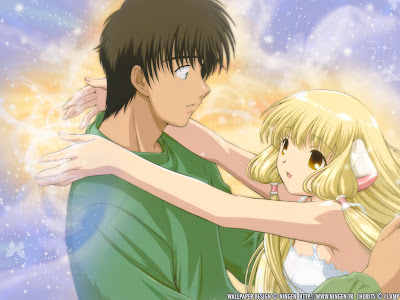August 22nd, 2010
Pervert Characters Top 100
Anime Relations: Naruto, Chobits, Dragon Ball, Dragon Ball GT, Golden Boy, Dragon Ball Z, Colorful, Ike! Ina-chuu Takkyuu-bu, Zero no Tsukaima, Naruto: Shippuuden, Zero no Tsukaima: Futatsuki no Kishi, Seto no Hanayome, To LOVE-Ru, Zero no Tsukaima: Princesses no Rondo, Junk Boy, Seto no Hanayome OVA, Kiss x Sis, To LOVE-Ru OVA, Nyan Koi!, Seto no Hanayome OVA Specials, Kiss x Sis (TV)
#.1 Master Muten Roshi from Dragonball
from Dragonball
#.2 Maeno from Ping pong club
from Ping pong club
#.3 Oe Kintaro from Golden Boy
from Golden Boy
#.4 Ryohei Yamazaki from Junk Boy
from Junk Boy
#.5 Steve from Colorful
from Colorful
#.6 Hideyoshi"Saru"Sarutobi from Seto no Hanayome
from Seto no Hanayome
#.7 Jiraiya "Ero-Sennin from Naruto
from Naruto
#.8 Lala Satalin Deviluke from To LOVE-Ru
from To LOVE-Ru
#.9 Kirche Augusta Frederica from Zero no Tsukaima
from Zero no Tsukaima
#.10 Hideki Motosuwa from Chobits
from Chobits
#.11 Keita "Ero Demon" Suminoe from Kiss x Sis
from Kiss x Sis
#.12 Junpei"Koubaka"Kousaka from Nyan Koi
from Nyan Koi
#.13 Tifania "Tifa" Westwood from Zero no Tsukaima
from Zero no Tsukaima
#.14![]() from
from
#.15![]() from
from
#.16![]() from
from
#.17![]() from
from
#.18![]() from
from
#.19![]() from
from
#.20![]() from
from
#.21![]() from
from
#.22![]() from
from
#.23![]() from
from
#.24![]() from
from
#.25![]() from
from
#.26![]() from
from
#.27![]() from
from
#.28![]() from
from
#.29![]() from
from
#.30![]() from
from
#.31![]() from
from
#.32![]() from
from
#.33![]() from
from
#.34![]() from
from
#.35![]() from
from
#.36![]() from
from
#.37![]() from
from
#.38![]() from
from
#.39![]() from
from
#.40![]() from
from
#.41![]() from
from
#.42![]() from
from
#.43![]() from
from
#.44![]() from
from
#.45![]() from
from
#.46![]() from
from
#.47![]() from
from
#.48![]() from
from
#.49![]() from
from
#.50![]() from
from
#.51![]() from
from
#.52![]() from
from
#.53![]() from
from
#.54![]() from
from
#.55![]() from
from
#.56![]() from
from
#.57![]() from
from
#.58![]() from
from
#.59![]() from
from
#.60![]() from
from
#.61![]() from
from
#.62![]() from
from
#.63![]() from
from
#.64![]() from
from
#.65![]() from
from
#.66![]() from
from
#.67![]() from
from
#.68![]() from
from
#.69![]() from
from
#.70![]() from
from
#.71![]() from
from
#.72![]() from
from
#.73![]() from
from
#.74![]() from
from
#.75![]() from
from
#.76![]() from
from
#.77![]() from
from
#.78![]() from
from
#.79![]() from
from
#.80![]() from
from
#.81![]() from
from
#.82![]() from
from
#.83![]() from
from
#.84![]() from
from
#.85![]() from
from
#.86![]() from
from
#.87![]() from
from
#.88![]() from
from
#.89![]() from
from
#.90![]() from
from
#.91![]() from
from
#.92![]() from
from
#.93![]() from
from
#.94![]() from
from
#.95![]() from
from
#.96![]() from
from
#.97![]() from
from
#.98![]() from
from
#.99![]() from
from
#.100![]() from
from
 from Dragonball
from Dragonball #.2 Maeno
 from Ping pong club
from Ping pong club #.3 Oe Kintaro
 from Golden Boy
from Golden Boy#.4 Ryohei Yamazaki
 from Junk Boy
from Junk Boy#.5 Steve
 from Colorful
from Colorful#.6 Hideyoshi"Saru"Sarutobi
 from Seto no Hanayome
from Seto no Hanayome#.7 Jiraiya "Ero-Sennin
 from Naruto
from Naruto#.8 Lala Satalin Deviluke
 from To LOVE-Ru
from To LOVE-Ru#.9 Kirche Augusta Frederica
 from Zero no Tsukaima
from Zero no Tsukaima#.10 Hideki Motosuwa
 from Chobits
from Chobits#.11 Keita "Ero Demon" Suminoe
 from Kiss x Sis
from Kiss x Sis#.12 Junpei"Koubaka"Kousaka
 from Nyan Koi
from Nyan Koi#.13 Tifania "Tifa" Westwood
 from Zero no Tsukaima
from Zero no Tsukaima#.14
#.15
#.16
#.17
#.18
#.19
#.20
#.21
#.22
#.23
#.24
#.25
#.26
#.27
#.28
#.29
#.30
#.31
#.32
#.33
#.34
#.35
#.36
#.37
#.38
#.39
#.40
#.41
#.42
#.43
#.44
#.45
#.46
#.47
#.48
#.49
#.50
#.51
#.52
#.53
#.54
#.55
#.56
#.57
#.58
#.59
#.60
#.61
#.62
#.63
#.64
#.65
#.66
#.67
#.68
#.69
#.70
#.71
#.72
#.73
#.74
#.75
#.76
#.77
#.78
#.79
#.80
#.81
#.82
#.83
#.84
#.85
#.86
#.87
#.88
#.89
#.90
#.91
#.92
#.93
#.94
#.95
#.96
#.97
#.98
#.99
#.100
Posted by canc | Aug 22, 2010 10:00 AM | 0 comments
August 7th, 2010
Absolutely Secret
Absolutely Secret: Girl Torture (極秘 女拷問, Gokuhi: onna gōmon?) aka Top Secrets of Women Torture and Top Secret of Torturing Women is a 1968 Japanese Pink film in the ero guro style directed by Kiyoshi Komori aka Haku Komori. The film features future Nikkatsu SM-queen Naomi Tani in a role during the first half of her career, working outside of the large studio system.
Set in the Edo Era, the film opens with a group of women being convicted of various crimes. The rest of the film is given to graphic depiction of the tortures the women endure as part of their sentences.
Set in the Edo Era, the film opens with a group of women being convicted of various crimes. The rest of the film is given to graphic depiction of the tortures the women endure as part of their sentences.

Posted by canc | Aug 7, 2010 6:29 AM | 0 comments
Synchro
Synchronicity is the experience of two or more events that are apparently causally unrelated occurring together in a meaningful manner. It is popularly known as the Baader-Meinhof Phenomenon. To count as synchronicity, the events should be unlikely to occur together by chance. The concept of synchronicity was first described by Swiss psychologist Carl Gustav Jung in the 1920s.The concept does not question, or compete with, the notion of causality. Instead, it maintains that just as events may be grouped by cause, they may also be grouped by their meaning. Since meaning is a complex mental construction, subject to conscious and subconscious influence, not every correlation in the grouping of events by meaning needs to have an explanation in terms of cause and effect.
The term synchronicity is coined by Jung to express a concept that belongs to him. It is about acausal connection of two or more psycho-physic phenomena. This concept was inspired to him by a patient's case that was in situation of impasse in treatment. Her exaggerate rationalism (animus inflation) was holding her back from assimilating unconscious materials. One night, the patient dreamt a golden scarab - cetonia aurata. The next day, during the psychotherapy session, a real insect this time, hit against the Jung's cabinet window. Jung caught it and discovered surprisingly that it was a golden scarab; a very rare presence for that climate.So, the idea is all about coincidence: in this case, between the scarab dreamt by the patient and its appearance in reality, in the psychotherapy cabinet.
But this coincidence is not senseless, a simple coincidence. By using the amplification method, Jung associates in connection with the scarab and comes to the concept of death and rebirth from the esoteric philosophy of antiquity, a process that, in a symbolic way, the patient should experience for a renewal and vitalization of her unilateral personality, the cause of the neurosis she was suffering from.Behind all these phenomena Jung places the archetype or the constellation of an archetype, which, in his view, is a process that engages equally objective manifestations, in the physical world, and subjective ones, in the psychological universe.Synchronicity, as an explicative theory, applies to phenomena from the area of parapsychology, prevision and premonition, to I Ching (specific method of consulting the Oracle of Changes), to astrology and many other borderline fields.
It is also present in psychotherapy, as we have already shown. Several psychoanalysts noted certain strange coincidences in which their patients received information about them by extra-sensorial ways, information that was not accessible to the general public.
Synchronistic events reveal an underlying pattern, a conceptual framework that encompasses, but is larger than, any of the systems that display the synchronicity.The suggestion of a larger framework is essential to satisfy the definition of synchronicity as originally developed by Carl Gustav Jung. Jung coined the word to describe what he called "temporally coincident occurrences of acausal events." Jung variously described synchronicity as an "acausal connecting principle", "meaningful coincidence" and "acausal parallelism". Jung introduced the concept as early as the 1920s but only gave a full statement of it in 1951 in an Eranos lecture and in 1952, published a paper, Synchronicity — An Acausal Connecting Principle, in a volume with a related study by the physicist Wolfgang Pauli.It was a principle that Jung felt gave conclusive evidence for his concepts of archetypes and the collective unconscious, in that it was descriptive of a governing dynamic that underlies the whole of human experience and history— social, emotional, psychological, and spiritual. Concurrent events that first appear to be coincidental but later turn out to be causally related are termed incoincident.
Jung coined the word to describe what he called "temporally coincident occurrences of acausal events." Jung variously described synchronicity as an "acausal connecting principle", "meaningful coincidence" and "acausal parallelism". Jung introduced the concept as early as the 1920s but only gave a full statement of it in 1951 in an Eranos lecture and in 1952, published a paper, Synchronicity — An Acausal Connecting Principle, in a volume with a related study by the physicist Wolfgang Pauli.It was a principle that Jung felt gave conclusive evidence for his concepts of archetypes and the collective unconscious, in that it was descriptive of a governing dynamic that underlies the whole of human experience and history— social, emotional, psychological, and spiritual. Concurrent events that first appear to be coincidental but later turn out to be causally related are termed incoincident.
Examples
The French writer Émile Deschamps claims in his memoirs that in 1805, he was treated to some plum pudding by a stranger named Monsieur de Fontgibu. Ten years later, the writer encountered plum pudding on the menu of a Paris restaurant and wanted to order some, but the waiter told him that the last dish had already been served to another customer, who turned out to be de Fontgibu. Many years later, in 1832, Deschamps was at a dinner and once again ordered plum pudding. He recalled the earlier incident and told his friends that only de Fontgibu was missing to make the setting complete—and in the same instant, the now senile de Fontgibu entered the room.
In his book Synchronicity (1952), Jung tells the following story as an example of a synchronistic event: "A young woman I was treating had, at a critical moment, a dream in which she was given a golden scarab. While she was telling me this dream, I sat with my back to the closed window. Suddenly I heard a noise behind me, like a gentle tapping. I turned round and saw a flying insect knocking against the window-pane from the outside. I opened the window and caught the creature in the air as it flew in. It was the nearest analogy to a golden scarab one finds in our latitudes, a scarabaeid beetle, the common rose-chafer (Cetonia aurata), which, contrary to its usual habits had evidently felt the urge to get into a dark room at this particular moment. I must admit that nothing like it ever happened to me before or since."
The wardrobe department for The Wizard of Oz unknowingly purchased a coat for character Professor Marvel from a second-hand store, which was later verified to have originally been owned by L. Frank Baum, the author of the novel on which the film was based.
The comic strip character Dennis The Menace featuring a young boy in a red and black striped shirt debuted on March 12, 1951 in 16 newspapers in the United States. Three days later in the UK a character called Dennis The Menace, wearing a red and black striped jumper made his debut in children's comic The Beano. Both creators have denied any causal connection.
Fourteen years prior to the sinking of the Titanic, the writer Morgan Robertson wrote the novel Futility, the central event of which is the sinking by a collision with an iceberg of the transatlantic Titan, described in the novel as allegedly unsinkable. Some of the circumstances in the novel match the actual disaster to an uncanny degree, including the number of passengers, the insufficient number of lifeboats, the name and size of the ship, the exact site of the incident, and the speed of the ship at the time of the collision. The correspondences have been noticed and the novel republished in the year following the actual disaster under the name The Wreck of the Titan.
Jung wrote, after describing some examples, "When coincidences pile up in this way, one cannot help being impressed by them—for the greater the number of terms in such a series, or the more unusual its character, the more improbable it becomes.
Synchronicity in the Five Element Theory
One of the most interesting aspects of traditional Chinese medicine is the Five Elements Theory. The five elements are wood, fire, earth, metal, and water. Each element corresponds to one of the Zang Fu organs, which are the main organ systems of the body in Chinese medicine. They are the liver, heart, spleen, lungs, and kidneys, respectively. Each element also corresponds to the points of a star, and there is a theory of interconnectedness and interdependence which exists between the points. When various elements become stronger or weaker due to disease, then this will adversely affect the balance between all of the elements, according to this theory.
What is also interesting, is that there are other cross-cultural icons which correspond to the concept of five elements. There are the Four Guardians of the Four compass directions: - The Green Dragon (east), The Red Phoenix (south), The White Tiger (west), and the Blue Tortoise (north). The center was considered China itself in this model , and thus you end up with five cardinal points which also also exist in the star of five element theory. These four animals also appear in the “Ode of the Golden Needle Acupuncture Techinques”, and which describe four acupuncture needling techniques – Green Dragon Swings his Tail, White Tiger Shaking his Head, Old Tortoise Probing the Point, and Red Phoenix Against the Wind .
In Qigong there is a meditation for a shielding technique which includes a visualization of the four animals, a green dragon, a red phoenix, a white tiger, and a blue tortoise. Each animal protects the practitioner on all four sides, and the center is the fifth component of the visualization, which consists of visualizing a yellow core running through the body from crown to feet, and which is the grounding and centering part of the meditation. The purpose of the meditation is to prepare a Qigong practitioner for the energy work they are about to do, and to also create a protective barrier so that the practitioner doesn’t take on any of the energy that they are working with.
Throughout traditional Chinese medicine, one finds many of these examples of this type of synchronicity. In this instance,however, what is also of note is that the symbol of the five pointed star and corresponding directions are also found in other parts of the world, in different types of context, and yet in very similar applications and understanding of symbolism. One might wonder if there were a global picture of interconnectedness that was bigger than meets the eye.

The synchronicity is closely dependent on the concept of the chance and what is called coincidences. Sometimes, when those appear disconcerting to us, we have the intuition that it is a sign of the destiny, that that cannot occur by pure and simple chance. I do not speak about mental projections of the paranoiacs who see signs where clearly a “reasonable” person does not see anything special…
Who forever have this impression? One thinks of something and this thing appears precise precisely at this time. One makes premonitory dreams, one has visions. A succession of unexpected events (of good news, if one is lucky) occurs in the same day. Etc… An extraordinary example is given on this page: http://sergecar.club.fr/TPE/synchronicite/documents.htm
It is said that the events are not synchronous when no relation appears between them; they are chaotic to some extent. Whereas the synchronicity supposes a unit vision of reality, non-duelle, nonfragmentary.
In the paradigm mechanist of normal science, illustrated in particular by Descartes and Newton and which prevail still largely in our companies, one a duality between the subject and the object, and the local law of causality supposes, which leads naturally to the definition that Cournot of the chance gives: a simple “intersection of independent causal series”.
However modern physics (quantum) showed that the concept chosic of reality was exceeded, that it had it rather to be conceived in the shapes of waves and fields, and that the universe could not exist independently of the observer, insofar as the observer always acts on observed (with due respect to Einstein…). It was as proven recently as particles could “communicate” between them in an instantaneous way, without transmission of signal thus, which would make it possible to show that “the most subtle level from the matter, exists an infinite correlation of the events, a unified field where to some extent in any point, in a holographic way, all information present and is thus reflected”!
From where the theory of the synchronicity, definite as being “coincidence in the time of two or several events without causal relation and having the same significant contents”. To also bring closer the law of the series (“never two without three”…) where an event seems to enter in resonance with itself and to be repeated.
Jung bound this theory with that of the unconscious collective, kind of universal mental plan, unit conscience in which one is sometimes plunged, in the sleep especially. That clearly is evoked in the metaphysics of Aurobindo and described by certain mystics, moreover… By reaching this higher plan, one would have access to A-causal information thus, from where the phenomena of telepathy, premonitions, aimed, etc When quantum physics speaks about unified field where an infinite correlation of the events resides and where information is instantaneous and omnipresent, it acts of the same thing, as if the universe were a great thought, a field of intelligence.
When it is thought and that something is wished, one can thus suppose that these intentions are creative energy, which influences the state of the universe and will be spread in acts. Thus we all are participating in the universe, in our universal subjectivity, relation between Self and To be it.
In the mental universal one which transcends the space-time-causality of the natural attitude, causality is not mechanical any more but understandable, and it in affectivity that the synchronicity opens out, just as is especially crowned. The synchronistic experiments appear without the subject not seeking them, it is thus not a mental projection.
To conclude, let us quote this very synthetic sentence of Jung: “The events synchronistic impose to us a vision of the world like unified field where the individual experiment and the action are basically connected to those of others”.
The theory or concept of synchronicity is supposedly “coined” by Carl Jung. It is about acausal connection of two or more psycho-physic phenomena.

This concept was inspired to him by a patient’s case that was in situation of impasse in treatment. Her exaggerate rationalism (animus inflation) was holding her back from assimilating unconscious materials. One night, the patient dreamt a golden scarab – cetonia aurata. The next day, during the psychotherapy session, a real insect this time, hit against the Jung’s cabinet window. Jung caught it and discovered surprisingly that it was a golden scarab; a very rare presence for that climate.
Behind all these phenomena Jung places the archetype or the constellation of an archetype, which, in his view, is a process that engages equally objective manifestations, in the physical world, and subjective ones, in the psychological universe.
I’ve blogged about archetypes before, here is what Jung said about the “Archetype”…
But what is the archetype? A hereditary given that shapes and transforms individual conscious. A given that is defined especially by a tendency rather than by specific contents, inherited images etc; a matrix that influences human behavior both on the level of ideas and on the moral, ethical level, of conduct in general. Jung talks about archetype (named at first primordial image) as biologists’ patterns of behavior. So, archetypes are innate tendencies that mold the human conduct.
“The concept of archetype – states Jung – arises from the repeated observation that sometimes myths and tales from universal literature comprise well defined themes which reappear everywhere and every time. We find the same themes in fantasies, dreams, delirious ideas and illusions of individuals that live in our present days”. These thematic images are representations of archetypes, they have archetypes as roots. They impress, influence and fascinate us.
“Archetypes do not have a determinate content… but since the moment they become conscious, that is filled with the material of our conscious experience… The archetype is empty; it is a pure formal element, nothing else but a possibility to perform, a tendency of representation given a priority”.
Archetypes correspond to instincts that, as well, cannot be recognized as such unless they become manifest.
Finally, the archetype is psychoid, that is psychic-like but not immediately accessible to the mind.

Source: http://www.carl-jung.net
Synchronicity also goes hand in hand with Cosmic ordering.
Cosmic Ordering is the belief that individuals can use their desires to "connect with the cosmos" and make those desires become reality,[1] The idea is connected to the New Age movement and other concepts such as the Law of Attraction.
Followers write down a wish list of things they want to come true and submit it to the cosmos and wait for it to happen.
Cosmic ordering was made famous in late 2005 by TV presenter Noel Edmonds.Edmonds was first introduced to the book ‘The Cosmic Ordering Service - A Guide to Realising Your Dreams’ by his reflexologist. Noel Edmonds had not worked on TV since the end of his BBC TV show ‘Noel's House Party’ in 1999. One of his wishes was for a new challenge. Later he was offered the chance to return to TV to work on Deal or No Deal.
The term synchronicity is coined by Jung to express a concept that belongs to him. It is about acausal connection of two or more psycho-physic phenomena. This concept was inspired to him by a patient's case that was in situation of impasse in treatment. Her exaggerate rationalism (animus inflation) was holding her back from assimilating unconscious materials. One night, the patient dreamt a golden scarab - cetonia aurata. The next day, during the psychotherapy session, a real insect this time, hit against the Jung's cabinet window. Jung caught it and discovered surprisingly that it was a golden scarab; a very rare presence for that climate.So, the idea is all about coincidence: in this case, between the scarab dreamt by the patient and its appearance in reality, in the psychotherapy cabinet.
But this coincidence is not senseless, a simple coincidence. By using the amplification method, Jung associates in connection with the scarab and comes to the concept of death and rebirth from the esoteric philosophy of antiquity, a process that, in a symbolic way, the patient should experience for a renewal and vitalization of her unilateral personality, the cause of the neurosis she was suffering from.Behind all these phenomena Jung places the archetype or the constellation of an archetype, which, in his view, is a process that engages equally objective manifestations, in the physical world, and subjective ones, in the psychological universe.Synchronicity, as an explicative theory, applies to phenomena from the area of parapsychology, prevision and premonition, to I Ching (specific method of consulting the Oracle of Changes), to astrology and many other borderline fields.
It is also present in psychotherapy, as we have already shown. Several psychoanalysts noted certain strange coincidences in which their patients received information about them by extra-sensorial ways, information that was not accessible to the general public.
Synchronistic events reveal an underlying pattern, a conceptual framework that encompasses, but is larger than, any of the systems that display the synchronicity.The suggestion of a larger framework is essential to satisfy the definition of synchronicity as originally developed by Carl Gustav Jung.
 Jung coined the word to describe what he called "temporally coincident occurrences of acausal events." Jung variously described synchronicity as an "acausal connecting principle", "meaningful coincidence" and "acausal parallelism". Jung introduced the concept as early as the 1920s but only gave a full statement of it in 1951 in an Eranos lecture and in 1952, published a paper, Synchronicity — An Acausal Connecting Principle, in a volume with a related study by the physicist Wolfgang Pauli.It was a principle that Jung felt gave conclusive evidence for his concepts of archetypes and the collective unconscious, in that it was descriptive of a governing dynamic that underlies the whole of human experience and history— social, emotional, psychological, and spiritual. Concurrent events that first appear to be coincidental but later turn out to be causally related are termed incoincident.
Jung coined the word to describe what he called "temporally coincident occurrences of acausal events." Jung variously described synchronicity as an "acausal connecting principle", "meaningful coincidence" and "acausal parallelism". Jung introduced the concept as early as the 1920s but only gave a full statement of it in 1951 in an Eranos lecture and in 1952, published a paper, Synchronicity — An Acausal Connecting Principle, in a volume with a related study by the physicist Wolfgang Pauli.It was a principle that Jung felt gave conclusive evidence for his concepts of archetypes and the collective unconscious, in that it was descriptive of a governing dynamic that underlies the whole of human experience and history— social, emotional, psychological, and spiritual. Concurrent events that first appear to be coincidental but later turn out to be causally related are termed incoincident._____________________________________________________________________
Examples
The French writer Émile Deschamps claims in his memoirs that in 1805, he was treated to some plum pudding by a stranger named Monsieur de Fontgibu. Ten years later, the writer encountered plum pudding on the menu of a Paris restaurant and wanted to order some, but the waiter told him that the last dish had already been served to another customer, who turned out to be de Fontgibu. Many years later, in 1832, Deschamps was at a dinner and once again ordered plum pudding. He recalled the earlier incident and told his friends that only de Fontgibu was missing to make the setting complete—and in the same instant, the now senile de Fontgibu entered the room.
In his book Synchronicity (1952), Jung tells the following story as an example of a synchronistic event: "A young woman I was treating had, at a critical moment, a dream in which she was given a golden scarab. While she was telling me this dream, I sat with my back to the closed window. Suddenly I heard a noise behind me, like a gentle tapping. I turned round and saw a flying insect knocking against the window-pane from the outside. I opened the window and caught the creature in the air as it flew in. It was the nearest analogy to a golden scarab one finds in our latitudes, a scarabaeid beetle, the common rose-chafer (Cetonia aurata), which, contrary to its usual habits had evidently felt the urge to get into a dark room at this particular moment. I must admit that nothing like it ever happened to me before or since."
The wardrobe department for The Wizard of Oz unknowingly purchased a coat for character Professor Marvel from a second-hand store, which was later verified to have originally been owned by L. Frank Baum, the author of the novel on which the film was based.
The comic strip character Dennis The Menace featuring a young boy in a red and black striped shirt debuted on March 12, 1951 in 16 newspapers in the United States. Three days later in the UK a character called Dennis The Menace, wearing a red and black striped jumper made his debut in children's comic The Beano. Both creators have denied any causal connection.
Fourteen years prior to the sinking of the Titanic, the writer Morgan Robertson wrote the novel Futility, the central event of which is the sinking by a collision with an iceberg of the transatlantic Titan, described in the novel as allegedly unsinkable. Some of the circumstances in the novel match the actual disaster to an uncanny degree, including the number of passengers, the insufficient number of lifeboats, the name and size of the ship, the exact site of the incident, and the speed of the ship at the time of the collision. The correspondences have been noticed and the novel republished in the year following the actual disaster under the name The Wreck of the Titan.
Jung wrote, after describing some examples, "When coincidences pile up in this way, one cannot help being impressed by them—for the greater the number of terms in such a series, or the more unusual its character, the more improbable it becomes.
_____________________________________________________________________
Synchronicity in the Five Element Theory
One of the most interesting aspects of traditional Chinese medicine is the Five Elements Theory. The five elements are wood, fire, earth, metal, and water. Each element corresponds to one of the Zang Fu organs, which are the main organ systems of the body in Chinese medicine. They are the liver, heart, spleen, lungs, and kidneys, respectively. Each element also corresponds to the points of a star, and there is a theory of interconnectedness and interdependence which exists between the points. When various elements become stronger or weaker due to disease, then this will adversely affect the balance between all of the elements, according to this theory.

What is also interesting, is that there are other cross-cultural icons which correspond to the concept of five elements. There are the Four Guardians of the Four compass directions: - The Green Dragon (east), The Red Phoenix (south), The White Tiger (west), and the Blue Tortoise (north). The center was considered China itself in this model , and thus you end up with five cardinal points which also also exist in the star of five element theory. These four animals also appear in the “Ode of the Golden Needle Acupuncture Techinques”, and which describe four acupuncture needling techniques – Green Dragon Swings his Tail, White Tiger Shaking his Head, Old Tortoise Probing the Point, and Red Phoenix Against the Wind .
In Qigong there is a meditation for a shielding technique which includes a visualization of the four animals, a green dragon, a red phoenix, a white tiger, and a blue tortoise. Each animal protects the practitioner on all four sides, and the center is the fifth component of the visualization, which consists of visualizing a yellow core running through the body from crown to feet, and which is the grounding and centering part of the meditation. The purpose of the meditation is to prepare a Qigong practitioner for the energy work they are about to do, and to also create a protective barrier so that the practitioner doesn’t take on any of the energy that they are working with.
Throughout traditional Chinese medicine, one finds many of these examples of this type of synchronicity. In this instance,however, what is also of note is that the symbol of the five pointed star and corresponding directions are also found in other parts of the world, in different types of context, and yet in very similar applications and understanding of symbolism. One might wonder if there were a global picture of interconnectedness that was bigger than meets the eye.
_____________________________________________________________________

The synchronicity is closely dependent on the concept of the chance and what is called coincidences. Sometimes, when those appear disconcerting to us, we have the intuition that it is a sign of the destiny, that that cannot occur by pure and simple chance. I do not speak about mental projections of the paranoiacs who see signs where clearly a “reasonable” person does not see anything special…
Who forever have this impression? One thinks of something and this thing appears precise precisely at this time. One makes premonitory dreams, one has visions. A succession of unexpected events (of good news, if one is lucky) occurs in the same day. Etc… An extraordinary example is given on this page: http://sergecar.club.fr/TPE/synchronicite/documents.htm
It is said that the events are not synchronous when no relation appears between them; they are chaotic to some extent. Whereas the synchronicity supposes a unit vision of reality, non-duelle, nonfragmentary.
In the paradigm mechanist of normal science, illustrated in particular by Descartes and Newton and which prevail still largely in our companies, one a duality between the subject and the object, and the local law of causality supposes, which leads naturally to the definition that Cournot of the chance gives: a simple “intersection of independent causal series”.
However modern physics (quantum) showed that the concept chosic of reality was exceeded, that it had it rather to be conceived in the shapes of waves and fields, and that the universe could not exist independently of the observer, insofar as the observer always acts on observed (with due respect to Einstein…). It was as proven recently as particles could “communicate” between them in an instantaneous way, without transmission of signal thus, which would make it possible to show that “the most subtle level from the matter, exists an infinite correlation of the events, a unified field where to some extent in any point, in a holographic way, all information present and is thus reflected”!
From where the theory of the synchronicity, definite as being “coincidence in the time of two or several events without causal relation and having the same significant contents”. To also bring closer the law of the series (“never two without three”…) where an event seems to enter in resonance with itself and to be repeated.
Jung bound this theory with that of the unconscious collective, kind of universal mental plan, unit conscience in which one is sometimes plunged, in the sleep especially. That clearly is evoked in the metaphysics of Aurobindo and described by certain mystics, moreover… By reaching this higher plan, one would have access to A-causal information thus, from where the phenomena of telepathy, premonitions, aimed, etc When quantum physics speaks about unified field where an infinite correlation of the events resides and where information is instantaneous and omnipresent, it acts of the same thing, as if the universe were a great thought, a field of intelligence.
When it is thought and that something is wished, one can thus suppose that these intentions are creative energy, which influences the state of the universe and will be spread in acts. Thus we all are participating in the universe, in our universal subjectivity, relation between Self and To be it.
In the mental universal one which transcends the space-time-causality of the natural attitude, causality is not mechanical any more but understandable, and it in affectivity that the synchronicity opens out, just as is especially crowned. The synchronistic experiments appear without the subject not seeking them, it is thus not a mental projection.
To conclude, let us quote this very synthetic sentence of Jung: “The events synchronistic impose to us a vision of the world like unified field where the individual experiment and the action are basically connected to those of others”.
_____________________________________________________________________
The theory or concept of synchronicity is supposedly “coined” by Carl Jung. It is about acausal connection of two or more psycho-physic phenomena.

This concept was inspired to him by a patient’s case that was in situation of impasse in treatment. Her exaggerate rationalism (animus inflation) was holding her back from assimilating unconscious materials. One night, the patient dreamt a golden scarab – cetonia aurata. The next day, during the psychotherapy session, a real insect this time, hit against the Jung’s cabinet window. Jung caught it and discovered surprisingly that it was a golden scarab; a very rare presence for that climate.
Behind all these phenomena Jung places the archetype or the constellation of an archetype, which, in his view, is a process that engages equally objective manifestations, in the physical world, and subjective ones, in the psychological universe.
I’ve blogged about archetypes before, here is what Jung said about the “Archetype”…
But what is the archetype? A hereditary given that shapes and transforms individual conscious. A given that is defined especially by a tendency rather than by specific contents, inherited images etc; a matrix that influences human behavior both on the level of ideas and on the moral, ethical level, of conduct in general. Jung talks about archetype (named at first primordial image) as biologists’ patterns of behavior. So, archetypes are innate tendencies that mold the human conduct.
“The concept of archetype – states Jung – arises from the repeated observation that sometimes myths and tales from universal literature comprise well defined themes which reappear everywhere and every time. We find the same themes in fantasies, dreams, delirious ideas and illusions of individuals that live in our present days”. These thematic images are representations of archetypes, they have archetypes as roots. They impress, influence and fascinate us.
“Archetypes do not have a determinate content… but since the moment they become conscious, that is filled with the material of our conscious experience… The archetype is empty; it is a pure formal element, nothing else but a possibility to perform, a tendency of representation given a priority”.
Archetypes correspond to instincts that, as well, cannot be recognized as such unless they become manifest.
Finally, the archetype is psychoid, that is psychic-like but not immediately accessible to the mind.

Source: http://www.carl-jung.net
_____________________________________________________________________
Synchronicity also goes hand in hand with Cosmic ordering.
Cosmic Ordering is the belief that individuals can use their desires to "connect with the cosmos" and make those desires become reality,[1] The idea is connected to the New Age movement and other concepts such as the Law of Attraction.
Followers write down a wish list of things they want to come true and submit it to the cosmos and wait for it to happen.
Cosmic ordering was made famous in late 2005 by TV presenter Noel Edmonds.Edmonds was first introduced to the book ‘The Cosmic Ordering Service - A Guide to Realising Your Dreams’ by his reflexologist. Noel Edmonds had not worked on TV since the end of his BBC TV show ‘Noel's House Party’ in 1999. One of his wishes was for a new challenge. Later he was offered the chance to return to TV to work on Deal or No Deal.
Posted by canc | Aug 7, 2010 5:59 AM | 0 comments




























